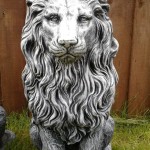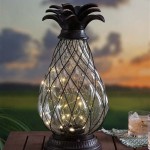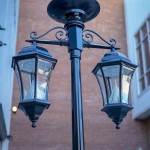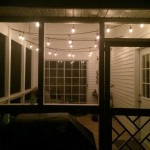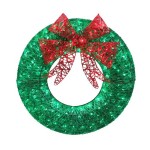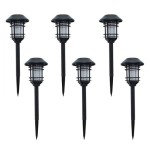Painting Metal For Outdoor Use: A Comprehensive Guide
Painting metal surfaces intended for outdoor exposure requires careful preparation and the selection of appropriate materials to ensure longevity and protection against the elements. The continuous cycle of sunlight, rain, temperature fluctuations, and humidity can rapidly degrade improperly coated metal, leading to rust, corrosion, and eventual structural failure. Therefore, understanding the critical steps involved in preparing and painting metal for outdoor environments is paramount for achieving a durable and aesthetically pleasing finish.
This article provides a detailed overview of the processes and considerations involved in painting metal for outdoor use, with a focus on best practices and material selection. The aim is to equip individuals with the knowledge necessary to undertake such projects successfully, ensuring the painted metal withstands the challenges posed by the outdoor environment.
Surface Preparation: The Key to a Lasting Finish
Effective surface preparation is arguably the most critical stage in painting metal for outdoor use. The presence of contaminants, loose rust, or existing coatings will significantly compromise the adhesion of the new paint, leading to premature failure. The preparation process aims to create a clean, sound, and slightly roughened surface to maximize paint adhesion. This involves several key steps:
Cleaning: The initial step involves removing any surface contaminants such as dirt, oil, grease, and loose debris. This can be achieved through various methods, including washing with a detergent solution, degreasing with solvent-based cleaners, or pressure washing. The selection of the appropriate cleaning method depends on the type and severity of contamination. For oily residues, a solvent-based degreaser is typically required. For general dirt and grime, a detergent solution followed by thorough rinsing is often sufficient.
Rust Removal: The presence of rust is a major concern when painting metal, as it can continue to corrode beneath the paint layer, ultimately causing the coating to flake and peel. Rust removal can be achieved through several methods:
- Mechanical Removal: This involves using tools such as wire brushes, sandpaper, power tools with abrasive attachments (grinders, sanders), or abrasive blasting to physically remove the rust. Mechanical removal is effective for localized rust and can be a cost-effective option for smaller projects. However, it is essential to ensure all rust is removed and the surrounding metal is properly feathered to create a smooth transition.
- Chemical Removal: Chemical rust removers typically contain acids that dissolve the rust. These products are available in various forms, including liquids, gels, and pastes. Chemical rust removal can be effective for removing rust in hard-to-reach areas or on intricate surfaces. However, it is crucial to follow the manufacturer's instructions carefully and to neutralize the chemical residue after treatment to prevent further corrosion.
- Abrasive Blasting: Abrasive blasting, also known as sandblasting, involves projecting abrasive particles (such as sand, steel grit, or aluminum oxide) at the metal surface at high velocity. This method is highly effective for removing rust and other contaminants and also creates a roughened surface that promotes paint adhesion. Abrasive blasting is typically performed by professionals due to the specialized equipment and safety precautions required.
Surface Profiling: Creating a surface profile, also known as surface roughening, is essential for optimal paint adhesion. A slightly roughened surface provides a greater surface area for the paint to grip, resulting in a stronger bond. Following rust removal, a light abrasion with sandpaper or a Scotch-Brite pad is often sufficient to create the desired profile. For abrasive blasted surfaces, the blasting media selected will naturally create a profile. The key is to achieve a uniform, subtle roughness without creating deep scratches or gouges.
Final Cleaning: Once the surface is prepared, it is crucial to remove any residual dust or debris. A final cleaning with a tack cloth or a solvent-based cleaner will ensure a clean surface ready for priming.
Primer Selection and Application
Priming is a crucial step in painting metal for outdoor use, as it provides several essential benefits: corrosion protection, improved paint adhesion, and a uniform surface for the topcoat. Selecting the appropriate primer is vital for achieving a durable and long-lasting finish.
Types of Primers: Several types of primers are suitable for outdoor metal applications, each with its own advantages and disadvantages.
- Zinc-Rich Primers: These primers contain a high concentration of zinc particles, which provide excellent corrosion protection through a process called cathodic protection. Zinc-rich primers are particularly effective in preventing rust, even if the topcoat is scratched or damaged. They are often used for industrial applications and marine environments.
- Epoxy Primers: Epoxy primers offer excellent adhesion, durability, and resistance to chemicals and solvents. They provide a tough, protective barrier against corrosion and are suitable for a wide range of metal surfaces. Epoxy primers typically require a two-part mixing process and must be applied within a specific timeframe after mixing.
- Urethane Primers: Urethane primers are known for their flexibility, durability, and UV resistance. They provide good adhesion and corrosion protection and are often used as a base coat for high-performance topcoats.
- Rust-Inhibitive Primers: These primers contain additives that inhibit the formation of rust. They are a good choice for surfaces where complete rust removal is difficult to achieve.
Primer Application: The primer should be applied according to the manufacturer's instructions, paying close attention to the recommended film thickness and drying time. Multiple thin coats are generally preferable to a single thick coat, as they allow for better adhesion and reduce the risk of runs or sags. Proper ventilation is essential during primer application, especially when using solvent-based products. The primer should be allowed to dry completely before applying the topcoat. Inspect the primed surface for any imperfections, such as runs, sags, or dry spray. These imperfections should be corrected by sanding or feathering before proceeding to the topcoat.
Topcoat Selection and Application
The topcoat provides the final layer of protection and aesthetic appeal to the painted metal. The selection of the topcoat is crucial for determining the overall durability and appearance of the finish. The topcoat should be compatible with the primer and provide resistance to UV radiation, moisture, and other environmental factors.
Types of Topcoats: Several types of topcoats are suitable for outdoor metal applications.
- Acrylic Enamels: Acrylic enamels are relatively inexpensive and offer good color retention and UV resistance. They are easy to apply and provide a durable finish for general outdoor use.
- Polyurethane Topcoats: Polyurethane topcoats are known for their excellent durability, chemical resistance, and gloss retention. They provide a tough, protective barrier against the elements and are often used for high-performance applications.
- Epoxy Topcoats: Similar to epoxy primers, epoxy topcoats offer excellent adhesion, durability, and chemical resistance. They are particularly well-suited for environments exposed to harsh chemicals or solvents.
- Powder Coating: Powder coating is a dry finishing process that involves applying a powdered coating to the metal surface and then curing it in an oven. Powder coatings provide a highly durable and corrosion-resistant finish and are available in a wide range of colors and textures. Powder coating is typically performed by professionals due to the specialized equipment required.
Topcoat Application: The topcoat should be applied according to the manufacturer's instructions, paying close attention to the recommended film thickness and drying time. Multiple thin coats are generally preferable to a single thick coat, as they allow for better adhesion and reduce the risk of runs or sags. Proper ventilation is essential during topcoat application, especially when using solvent-based products. The topcoat should be allowed to dry completely before handling the painted metal. Inspect the painted surface for any imperfections, such as runs, sags, dry spray, or orange peel. These imperfections can be corrected by sanding or buffing.
Application Techniques: The application method chosen can significantly impact the final finish. Brushing, rolling, and spraying are common methods. Brushing is suitable for small areas or intricate details, while rolling is efficient for larger flat surfaces. Spraying, using either conventional spray guns or aerosol cans, provides the most uniform and professional-looking finish. When spraying, it is crucial to maintain a consistent distance and speed to avoid runs or dry spray.
By carefully following these guidelines for surface preparation, primer selection, and topcoat application, individuals can achieve a durable and aesthetically pleasing finish that will protect metal surfaces from the harsh outdoor environment for years to come. Regular maintenance, such as cleaning and touch-up repairs, will further extend the lifespan of the painted metal.

Metal Painting Mastering The Art Of Rust Prevention

How To Paint Rusted Wrought Iron Furniture A Metal Table

Metal Painting Mastering The Art Of Rust Prevention

Stainless Steel Rectangular Ss Hindi Letter Sign Board For Outdoor

Stainless Steel Rectangular Ss Hindi Letter Sign Board For Outdoor Lighting

What Is The Difference Between Metal Primer Wood Indigo Paints

Stainless Steel Rectangular Ss Hindi Letter Sign Board For Outdoor Lighting

प न व ल ट म Oil Paint ज स चमक Water Enamel All Colour

Stainless Steel Rectangular Ss Hindi Letter Sign Board For Outdoor

How To Deal With Rust On Metal You Want Paint Myboysen
